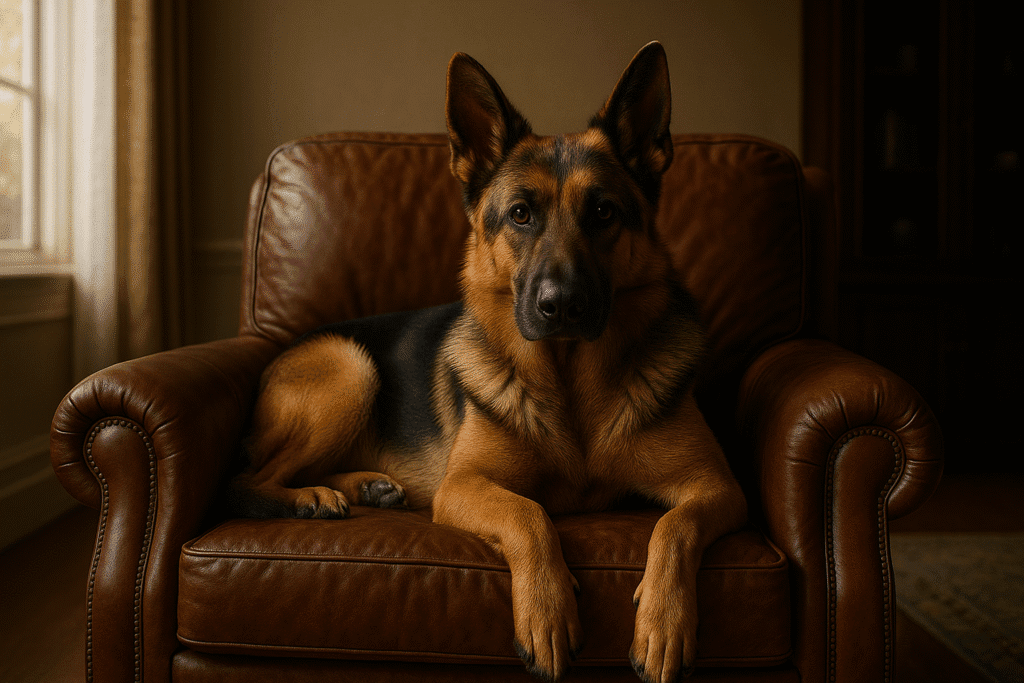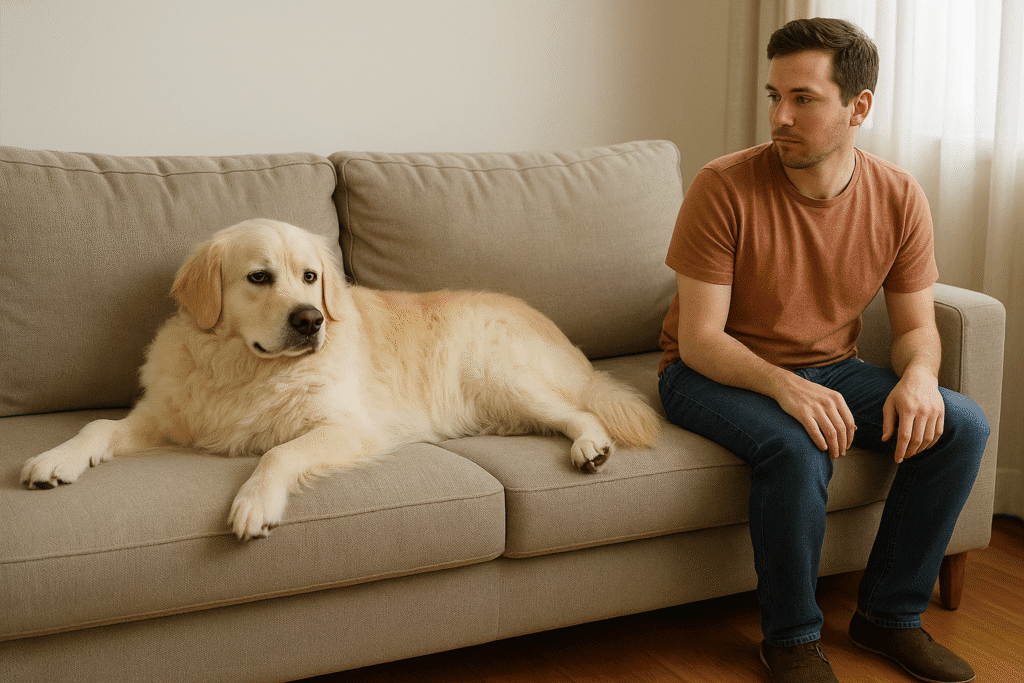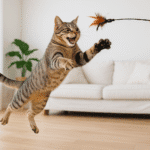The Spot Stealer: Why Your Dog Takes Your Seat the Moment You Get Up
It’s a scene that plays out in households across the world. You’re settled into your favorite spot on the couch, the cushions perfectly molded to your form. You get up for a mere moment—to grab a drink, answer the door, or fetch a blanket. You’re gone for no more than thirty seconds. But when you return, you find that your throne has been usurped. There, in the warm indentation you just created, lies your dog, often feigning a deep, profound sleep, the picture of innocence. You have just become a victim of the notorious Spot Stealer.
This classic canine maneuver is as baffling as it is endearing. It feels like a deliberate, calculated power move wrapped in a furry, adorable package. Are they trying to assert their dominance? Is it a petty act of defiance? Or is there something deeper at play? The truth is, this common dog behavior is a complex cocktail of instinct, affection, and simple opportunism. Let’s pull back the curtain on one of the most beloved and debated habits of our four-legged companions.
The Motives of a Canine Thief: Why They Covet Your Spot
While it might feel like a personal slight, your dog’s desire to occupy your space is rarely malicious. It’s driven by a powerful set of motivations that all circle back to one central theme: you.
1. The Allure of Your Scent
A dog’s primary sense is their sense of smell, which is thousands of times more powerful than our own. Your favorite spot on the couch is a concentrated hub of your personal scent. For your dog, this scent is the ultimate comfort. By curling up where you just were, they are immersing themselves in the smell of their favorite person, their pack leader. It’s the canine equivalent of borrowing a loved one’s sweatshirt. It’s comforting, it reduces anxiety, and it reinforces their powerful bond with you.
2. The Simple Comfort of a Warm Seat
Let’s not overthink it entirely. You just vacated a perfectly good, pre-warmed, and softened-up spot. Dogs are creatures of comfort and efficiency. Why would they go to the trouble of warming up a cold spot on the floor when a five-star, ready-to-use location has just become available? Sometimes, spot-stealing is less about a deep psychological need and more about a simple, opportunistic upgrade.
3. A Nod to Pack Dynamics
In a wolf pack, sleeping locations can sometimes correlate with rank. The best, most comfortable, or safest spots are often occupied by the higher-ranking members. While your dog doesn’t see you as a “wolf,” these instincts can still surface in subtle ways. By taking your spot, your dog might be gently asserting their own importance within the family pack. It’s usually not an aggressive challenge for dominance, but more of a quiet statement: “I am an important member of this family, and I deserve this prime real estate, too.”
4. It’s All About Association
Your dog has learned that *that specific spot* is where good things happen. It’s where you sit when you’re relaxed, where you hand out idle ear scratches, and where you cuddle up to watch TV. By occupying the spot, they may be trying to trigger these pleasant interactions. They’re not just stealing a seat; they’re putting in a bid for some quality time.
The Art of the Steal: Classic Techniques
A true Spot Stealer is an artist, and like any artist, they have their preferred techniques.
The “Deep Sleep” Deception
This is the most popular method. The moment you approach your stolen seat, the dog immediately falls into what appears to be the deepest sleep of their life. They are completely unresponsive, perhaps letting out a soft snore for added effect. Their goal is to make you feel too guilty to possibly disturb their profound slumber.
The “Cuddle Ambush” Defense
This technique weaponizes cuteness. As you approach, the dog instantly flips onto its back, exposing its belly and wagging its tail. The message is clear: “You can’t be mad at me, and you can’t move me, because I am too adorable. Your only option is to administer belly rubs.” It is ruthlessly effective.
The Unblinking “Seat’s Taken” Stare
Some dogs don’t bother with deception. They simply sit bolt upright in your spot and stare you down as you approach. Their expression is a mixture of defiance and entitlement. There’s no malice, just a calm, factual statement that this spot is now under new management and you should probably find somewhere else to sit.
Is It a Harmless Quirk or a Red Flag?
For 99% of dogs, spot-stealing is a perfectly harmless, and often amusing, quirk. It’s a sign of their bond with you. However, it’s critical to know the difference between this benign behavior and true resource guarding.
Resource guarding is when a dog uses aggression to control access to a valued item, and that “item” can be a spot on the couch. You should be concerned and seek professional help from a certified veterinary behaviorist or trainer if your dog exhibits any of the following when you try to reclaim your spot:
- Growling, lip curling, or showing teeth.
- Snapping or lunging at you as you approach.
- A low, rumbling growl if you try to sit next to them.
- Stiffening their body and giving you a hard stare.
If you see these behaviors, your dog is not being a “petty pup”; they are feeling threatened and are trying to warn you away. This requires a careful management and training plan, not punishment.
How to Reclaim Your Throne (Gently)
If your dog is a harmless spot-stealer but you’d still like to be able to sit in your favorite chair, here are some positive ways to manage the situation.
- Teach the “Off” Cue: Make getting off the furniture a positive, rewarding game. Toss a high-value treat on the floor and say “Off!” in a happy voice as they jump down to get it. Practice this when it’s not a conflict, so the command has a happy association.
- Provide an Upgrade: Get your dog their own luxurious, irresistible bed and place it near your favorite spot. Make this bed a magical place where special, long-lasting chews appear. Reward them heavily whenever they choose to use their own bed.
- Trade, Don’t Take: Instead of physically moving your dog (which can create conflict), offer them a trade. Show them a favorite toy or a tasty treat to lure them off the spot. Once they are up, you can sit down.
- Manage by Invitation: Create a new rule where furniture is by invitation only. Pat the cushion and say “Up!” when you want them to join you. This clarifies boundaries without being punitive.
Conclusion: A Quirky Compliment
In the grand scheme of things, having your seat stolen is one of the more charming “problems” a dog owner can face. It’s a quirky, silent compliment. It says your dog loves your scent, feels safe with you, and considers you the center of their universe. So, the next time you return to find a furry creature snoozing in your warm spot, take a moment to appreciate the sentiment. You can always teach them to move, but you can never replace the bond that makes them want to be there in the first place.






